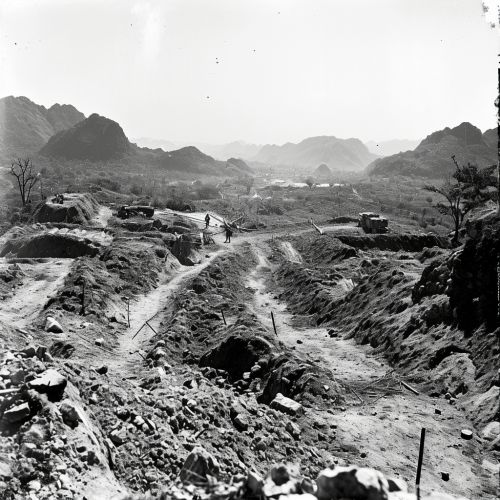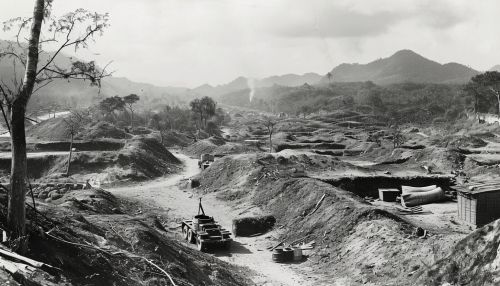Battle of Dien Bien Phu
Background
The Battle of Dien Bien Phu was a significant confrontation during the First Indochina War, which took place between the French Union's French Far East Expeditionary Corps and Viet Minh communist-nationalist revolutionaries. The battle occurred in the rural, mountainous region of Dien Bien Phu, in what is now northwestern Vietnam.
Prelude to the Battle
In November 1953, the French, under the command of General Henri Navarre, set up a defensive complex at Dien Bien Phu, hoping to prevent Viet Minh incursions into Laos and to draw Viet Minh forces away from populated areas. The French believed that they could defend the base by relying on superior artillery and air support.
Viet Minh Preparations
The Viet Minh, under the leadership of General Vo Nguyen Giap, spent several months preparing for the battle. They transported heavy artillery pieces through difficult terrain, dug a network of tunnels and trenches around the French positions, and stockpiled vast amounts of supplies.
The Battle
The battle began on March 13, 1954, with a massive Viet Minh artillery bombardment. Over the next 56 days, the Viet Minh launched several infantry assaults, gradually closing in on the French positions. Despite fierce resistance, the French were gradually worn down by the relentless Viet Minh attacks and the lack of supplies.
Outcome and Significance
The battle ended on May 7, 1954, with a decisive Viet Minh victory. The French suffered heavy casualties and were forced to surrender. The Battle of Dien Bien Phu marked the end of French colonial rule in Indochina and led to the Geneva Conference, where the decision was made to divide Vietnam at the 17th parallel.
Aftermath
The defeat at Dien Bien Phu led France to withdraw from Indochina, paving the way for the division of Vietnam and the subsequent Vietnam War. The battle is often cited as a classic example of successful guerrilla warfare and is studied in military academies around the world.
See Also


